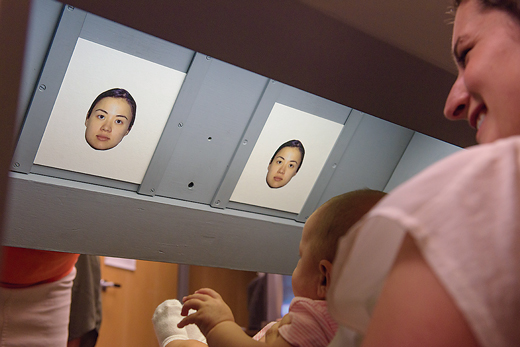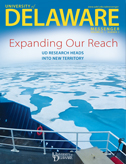
Reversing racial stereotypes
OUR FACULTY | New research by UD psychological scientist Paul Quinn and his collaborators across the globe has found that a simple exercise can undo the unconscious racial biases that young children might have—biases that can develop as early as infancy.
By 9 months of age, infants not only distinguish racial categories but also become less able to tell different individuals apart if they are members of a less-familiar race. For example, Caucasian infants can identify Caucasian faces as belonging to different individuals, but they are less likely to see Asian or African faces as distinct individuals.
“Our original thinking about the 9-month-old findings was that this process is based on visual perception, not any social bias,” said Quinn, professor of psychological and brain sciences, who has worked for more than a decade with researchers in Canada, France and China to explore how infants mentally classify faces by race and gender.
But might these perceptual biases in infants be related to the social biases seen in older kids and adults?
To find out, Quinn and his collaborators in China used photos of African and Asian faces and morphed them together to create ambiguous images that looked equally African and Asian. When researchers showed the images to 4- to 6-year-olds in China, the children identified the happy faces as Asian (the category they were used to seeing) and the angry faces as African (a group they rarely saw in daily life).
The scientists’ next step was to see whether the children’s unconscious racial biases could be altered. They showed the youngsters five different African faces, humanizing an unfamiliar race by giving a name to each person and repeating the process until the children could personally identify each of the five faces.
It took a mere 15-30 minutes and made a significant difference: When the children looked at the ambiguous-race photos again, their bias in favor of their own racial group had dropped significantly.
“If you can get kids to start thinking about members of other races as unique individuals,” said Quinn, “you’re going to be more likely to prevent stereotypes from sweeping in and generalizing across all of the ‘same-type’ faces.”
Article by Ann Manser, AS73


